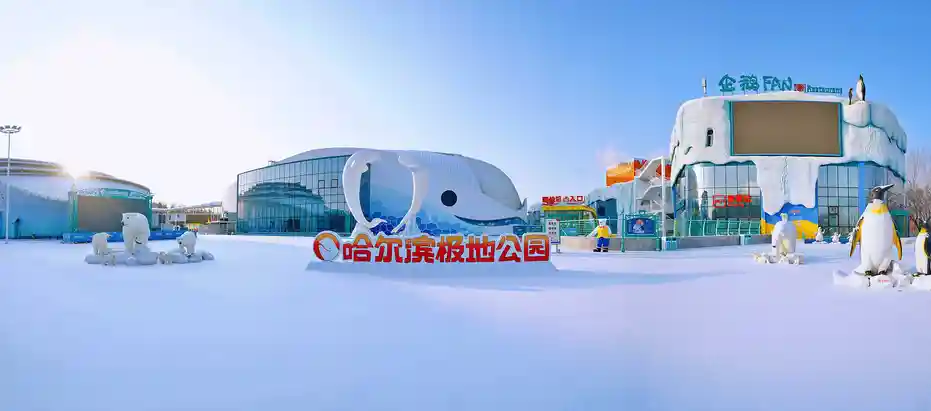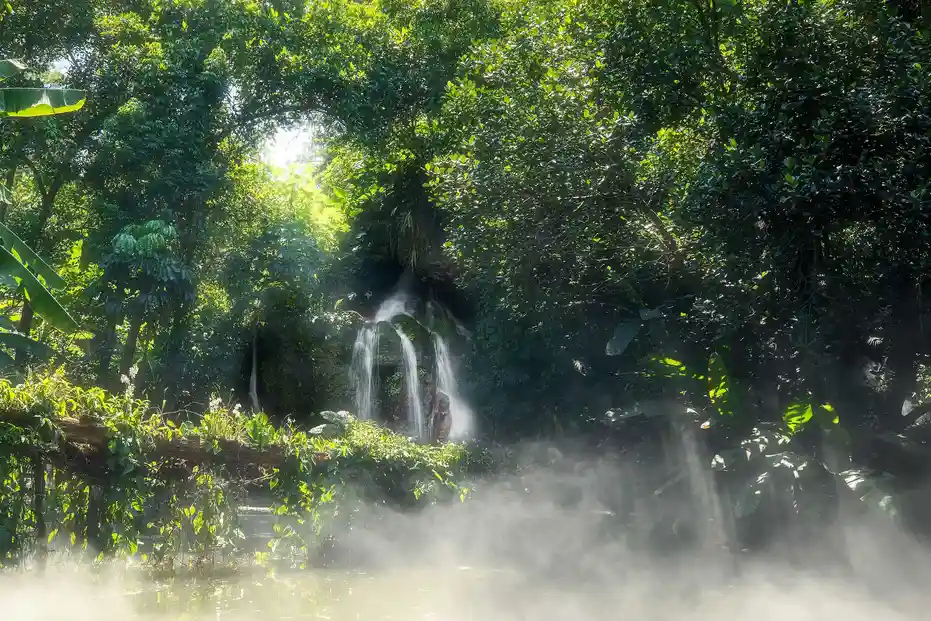Introduction: Discover the Magic of Harbin’s Polar Wonderland
Harbin, China, is famous for its icy architecture and winter festivals. But beyond the snow sculptures lies a unique destination that blends wildlife, education, and Arctic-themed adventure—Harbin Polar Park. This expansive park is one of the world’s largest facilities dedicated to polar animals. It offers visitors an immersive experience with species from both the Arctic and Antarctic regions.
If you’re planning a trip to northeastern China during the colder months, this guide will help you make the most of your visit. From essential tips on tickets and hours to insights about animal exhibits and seasonal events, we’ll cover everything you need to know before stepping into this frozen paradise. Whether you’re a wildlife enthusiast, a family traveler, or simply curious about cold-climate ecosystems, Harbin Polar Park has something captivating in store.
This article provides up-to-date, practical information based on firsthand visitor experiences and official sources. Our goal is to ensure your visit is not only enjoyable but also efficient and educational.
What Is Harbin Polar Park?
Harbin Polar Park is more than just a zoo—it’s a large-scale conservation and education center focused on polar species. Opened in 2005, it spans over 1 million square meters and houses thousands of animals across dozens of species. Located near the Songhua River, the park leverages Harbin’s naturally cold climate to create authentic habitats.
The facility was designed with scientific research and public engagement in mind. It includes indoor enclosures, outdoor play areas, breeding centers, and interactive exhibits. Unlike traditional zoos, Harbin Polar Park emphasizes naturalistic environments. Animals are given space to swim, climb, and socialize as they would in the wild.
Key species include:
- Arctic foxes
- Polar bears
- Penguins (including King, Gentoo, and Rockhopper)
- Seals and sea lions
- Walruses
- Beluga whales
Each zone mimics the geographic and climatic conditions of the animal’s native region. For example, penguin enclosures maintain sub-zero temperatures year-round using advanced refrigeration systems. Meanwhile, underwater viewing tunnels allow guests to observe marine mammals gliding through simulated ocean currents.
A Glimpse Into Its History and Mission
Originally established as part of Harbin’s broader tourism development strategy, the park evolved into a major player in ex-situ wildlife conservation. Over the years, it has collaborated with international institutions on breeding programs for endangered polar species.
One of its primary missions is raising awareness about climate change impacts on polar ecosystems. Educational signage throughout the park explains how melting ice caps affect animal migration, feeding patterns, and reproduction rates. Interactive kiosks offer quizzes and short documentaries tailored for children and adults alike.
Today, Harbin Polar Park remains a leader in animal welfare standards within China. Regular veterinary checkups, balanced diets, and behavioral enrichment activities are standard practice. Staff members undergo rigorous training in animal psychology and emergency response.
Top Animal Exhibits You Can’t Miss
Visiting Harbin Polar Park means encountering some of Earth’s most fascinating creatures up close. Each exhibit is thoughtfully designed to balance entertainment with education. Here are the must-see attractions:
Penguin Paradise
Home to over 200 penguins from six different species, this area simulates Antarctic conditions perfectly. Visitors walk along heated pathways while watching penguins waddle, dive, and interact in spacious pools.
Feeding sessions occur twice daily and include live commentary explaining each species’ behavior. The King Penguins stand out due to their height and striking yellow-orange ear patches.
Polar Bear Territory
This open-air enclosure features rocky terrain, water features, and shaded dens. Cameras inside nesting areas stream real-time footage to monitors nearby—ideal for spotting cubs during breeding season.
Polar bears at Harbin Polar Park participate in voluntary health checks, where they touch targets or open their mouths on command. These behaviors reduce stress during medical procedures.
Beluga Bay
A highlight for many guests, Beluga Bay offers panoramic underwater views through curved acrylic tunnels. These white whales are highly vocal and often approach the glass curiously.
Daily shows feature trainers discussing beluga communication methods, including echolocation and melon-based sound modulation. While performances are brief, they emphasize respect for the animals rather than tricks.
Planning Your Visit: Hours, Tickets & Access
To avoid disappointment, proper planning is essential when visiting Harbin Polar Park. Below is key logistical information:
| Category | Details |
|---|---|
| Opening Hours | 8:30 AM – 4:30 PM (Winter), 8:00 AM – 5:00 PM (Summer) |
| Last Entry | 3:30 PM |
| Standard Ticket | $25 USD (Adult), $15 USD (Child 1.2–1.5m) |
| Free Admission | Children under 1.2m tall |
| Location | No. 88, North Second Ring Road, Harbin, Heilongjiang |
| Public Transit | Bus #88 or #29, stop: “Polar Wildlife Park” |
Tickets can be purchased online via the official website or third-party platforms like Ctrip and Klook. Buying in advance ensures entry during peak seasons, especially around Chinese New Year and Ice Festival periods.
Pro tip: Arrive early in the morning. Animals tend to be more active before midday heat builds up—even in winter.
Nearby Accommodations and Dining Options
While Harbin Polar Park doesn’t have on-site lodging, several hotels lie within a 20-minute drive. Recommended options include:
- Yabuli Ski Resort Hotel (luxury, ideal for extended stays)
- Holiday Inn Harbin City Center (mid-range, good transport links)
- Jinjiang Inn (budget-friendly, clean rooms)
Inside the park, multiple cafeterias serve hot meals, snacks, and warm beverages. Menu items include dumplings, noodle soups, and coffee—all crucial for staying energized in freezing temperatures.
Best Time to Visit Harbin Polar Park
Timing significantly affects your experience. Most travelers choose December through February for maximum snow coverage and festival synergy. However, each season offers distinct advantages.
Winter (Dec–Feb):
- Ideal weather for polar animals
- Coincides with Harbin International Ice and Snow Sculpture Festival
- Fewer insects, cleaner enclosures
Spring (Mar–May):
- Milder temperatures for walking long distances
- Baby animals often appear in April
- Fewer crowds after Lunar New Year rush
Summer (Jun–Aug):
- Longer daylight hours
- Outdoor play zones fully accessible
- Higher humidity may stress some species; indoor viewing recommended
Fall (Sep–Nov):
- Lowest visitor numbers
- Cooling temps prepare animals for winter routines
- Limited show schedules
For optimal viewing, aim for weekday mornings between January and March. Avoid weekends and public holidays if possible.
Interactive Experiences and Educational Programs
Beyond passive observation, Harbin Polar Park encourages hands-on learning. Several programs promote deeper understanding of polar ecology.
Behind-the-Scenes Tours
Available by reservation only, these 90-minute guided walks take small groups into restricted areas. Participants see food prep kitchens, veterinary clinics, and staff training zones.
Guests learn how keepers use positive reinforcement techniques instead of punishment. You might even witness a seal responding to hand signals during a cognitive test.
Junior Zookeeper Program
Designed for children aged 8–14, this half-day activity includes feeding assistance (under supervision), habitat cleaning demos, and career talks with biologists.
Spaces fill quickly, so book at least two weeks ahead. Participation costs an additional $30 per child, including a souvenir badge and certificate.
School and Group Visits
Educational tours are available for students and researchers. Curriculum-aligned materials cover topics like biodiversity, thermoregulation, and food web dynamics.
Teachers receive pre-visit packets with worksheets and post-trip discussion prompts. Universities interested in collaboration should contact the park’s research department directly.
Photography Tips for Capturing Stunning Moments
Capturing great photos at Harbin Polar Park requires preparation. Cold weather affects both equipment and visibility.
Bring the following:
- A DSLR or mirrorless camera with spare batteries (cold drains power fast)
- Microfiber cloths to wipe condensation
- Telephoto lens (70–200mm) for distant subjects
- Stabilizer or monopod for low-light shots
Avoid using flash near sensitive animals like penguins and belugas. Instead, rely on ambient lighting or timed exposures.
Popular photo spots include:
- The underwater tunnel in Beluga Bay
- The elevated boardwalk overlooking polar bear pools
- The central plaza during scheduled feeding times
Always follow posted rules. Drones are prohibited without special permission.
Sustainability and Conservation Efforts
Harbin Polar Park plays an active role in global wildlife preservation. Its contributions extend far beyond exhibition.
Current initiatives include:
- Participation in the Chinese Association of Zoological Gardens’ Species Survival Plan
- Annual funding for Arctic field research projects
- On-site recycling stations and solar-powered lighting
- Plastic reduction campaign—no single-use bottles sold inside
Breeding success stories include healthy litters of arctic fox kits and successful artificial insemination in polar bears. Data collected here informs international conservation strategies.
Visitors support these efforts simply by purchasing tickets. A portion of all revenue funds habitat restoration and anti-poaching patrols in remote regions.
Accessibility and Visitor Comfort
The park prioritizes inclusivity. Ramps, elevators, and wheelchair rentals ensure access for guests with mobility challenges.
Other amenities:
- Indoor rest lounges with heating
- Family restrooms with baby-changing stations
- Lost-and-found service at main entrance
- Free Wi-Fi in visitor center
Dress warmly. Even with heated walkways, wind chill can make outdoor sections feel below -20°C (-4°F). Layered clothing, insulated boots, gloves, and hats are strongly advised.
Strollers and backpack carriers are allowed but may face restrictions during icy conditions.
Conclusion: Make the Most of Your Harbin Polar Park Adventure
Harbin Polar Park stands out as a premier destination for eco-tourism and wildlife appreciation. Combining cutting-edge science with engaging displays, it offers a rare window into life at the planet’s extremes.
By planning ahead, respecting animal boundaries, and participating in educational programs, you enhance both your experience and the park’s mission. Whether marveling at playful penguin colonies or observing silent belugas drifting past glass walls, every moment holds wonder.
We recommend allocating at least four hours for a thorough tour. Combine your visit with Harbin’s famous ice festival for a complete cultural and natural adventure.
As climate change continues to threaten polar habitats, places like Harbin Polar Park become increasingly vital—not just for conservation, but for inspiring future generations to protect our fragile ecosystems. Your visit supports that cause in meaningful ways.



